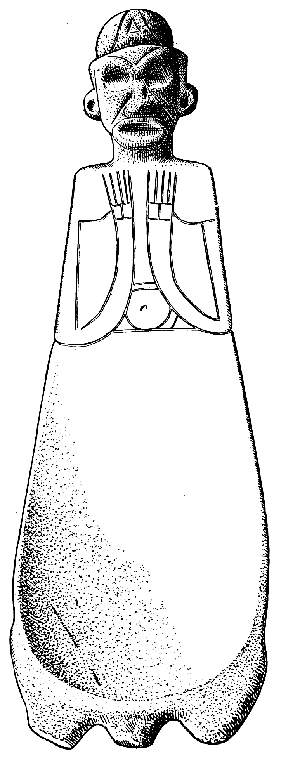Athena Review Image Archive ™
Duho or carved effigy seat from a Taino town in Cuba

Stone duho, or carved seat with effigy (Fewkes 1922; Berlin Museum)
From the Journal
of the First Voyage of Christopher Columbus, summarized by his son
Ferdinand, we learn that on Oct. 29, 1492 the Spaniards visited a Taino
town at río de Mares (Puerto Gibara) in Cuba, where they saw large
houses containing wooden furniture, some elaborately carved.
Ferdinand's account includes a description of duhos,
or carved seats found in the houses of Taino caciques or chiefs "They
seated each in a chair made of one piece and in a strange shape, for it
resembled some short-legged animal with a tail as broad as the seat of
the chair [which] had a head in front with eyes and ears of gold. They
call these seats duhos."
Many
of these effigy seats are similar in form to stone carvings which may
have been used as ceremonial grinding stones or metates, and are
similar to carved stone slabs commonly found on the mainland in Costa
Rica. The duho effigies may also have a relation to the zemi images common in the Antilles.
Columbus in his Journal
entry for November 29, 1492 also noted that head effigies and
occasionally, actual heads of principal ancestors were worshipped in
household shrines in Hispaniola, an interpretation which modern
scholars including Rouse and Arrom (1992) find to be accurate for the
contact-period Taino of the Greater Antilles.
Copyright © 1996-2019 Rust Family Foundation (All Rights Reserved).